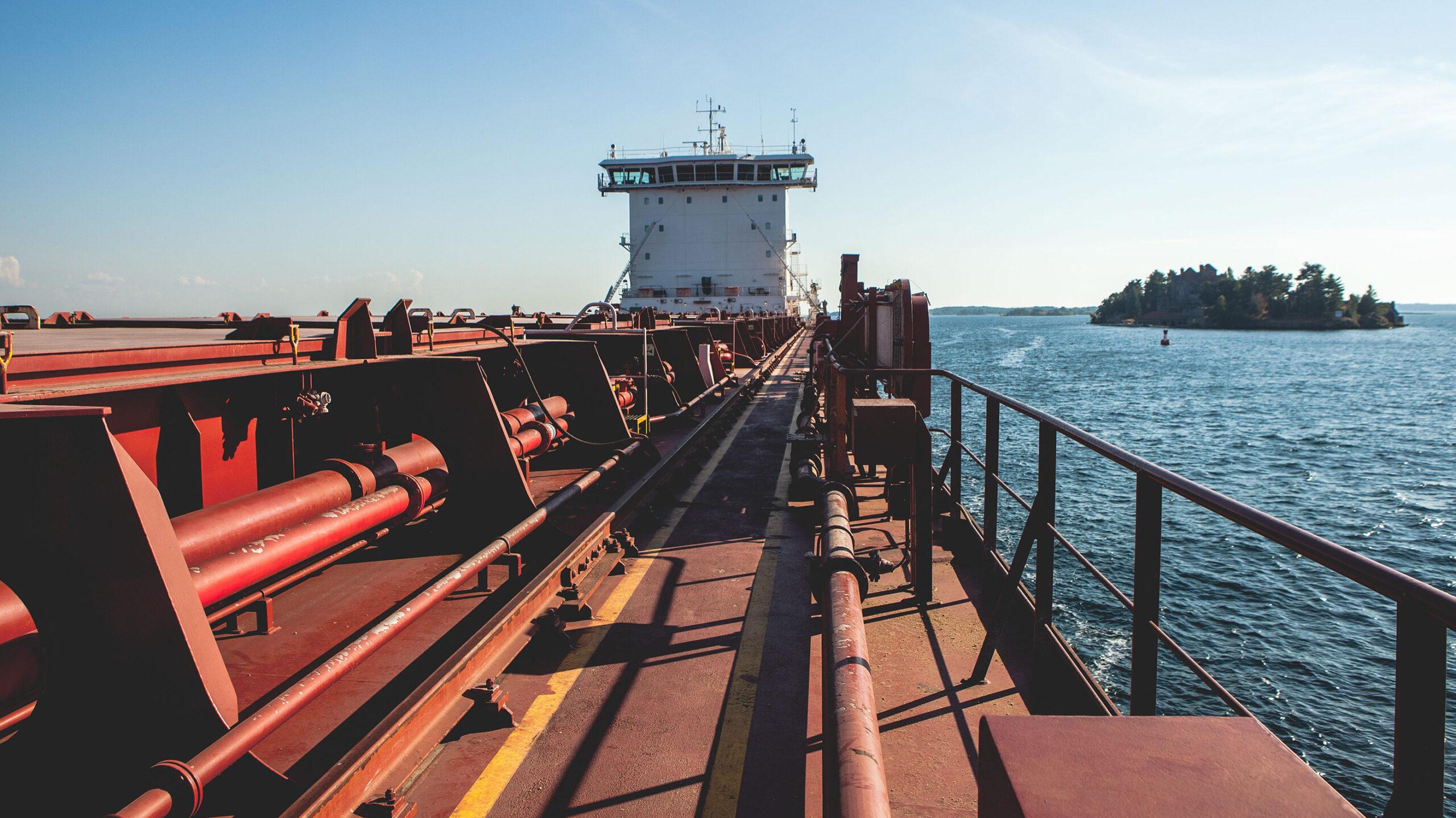
The Chamber is seeking bi-national solutions to ballast water management in the Great Lakes-St. Lawrence region that are operationally and economically achievable.
When not fully loaded, cargo ships must take on water (ballast) to maintain stability. Once pumped onboard, ballast water is stored in narrow cavities (ballast tanks) built into the hull of a ship. Ballast water pumped onboard in one port may inadvertently contain aquatic organisms and they could be released if the ballast is discharged in another port.
In order to prevent the introduction of invasive species, discharge rules on ballast water are regulated domestically and internationally. Regulations are in place in both Canada and the United States for vessels arriving from overseas. As well, regulations in the United States set requirements for vessels operating in the Great Lakes and coastal waters.
The Great Lakes – St. Lawrence Seaway has the most stringent ballast water management and inspection measures in the world. A joint Canada – U.S. inspection program has been in place since 2006 that inspects arriving vessels from overseas. Ocean-going vessels must exchange ballast and flush tanks before arriving in domestic waters. Since this program started, no new aquatic invasive species have been discovered in the Great Lakes region due to shipping.
Globally, on September 8, 2017, the International Convention for the Control and Management of Ships’ Ballast Water and Sediments entered into force. Canada is a Party to the Convention and Transport Canada will be updating its regulations to meet the Convention’s obligations.
The United States is not a Party to the Convention, but implements most of its provisions. On December 4, 2018, the Vessel Incidental Discharge Act entered into force requiring the Environmental Protection Agency and the Coast Guard to each develop regulations, which is expected to take at least four years. In the interim, existing requirements of both agencies remain in place. Under this Act, states can no longer set their own individual standards.
Domestic ship operators, whose vessels do not travel overseas, have still not found any ballast water management systems that can meet the demands of domestic trading patterns, reliably operate in the region’s unique environment, and are economically feasible. That is why the U.S. government currently exempts their own domestic fleet from having to install ballast water management systems in the Great Lakes.
The Canadian and U.S. governments are now on separate regulatory tracks going forward, which could significantly harm both countries’ domestic vessel fleets. Thus, the Chamber of Marine Commerce urges the governments of Canada and the United States to come together to forge a bilateral arrangement on managing ballast water.
The Great Lakes-St. Lawrence Region is a bi-national contiguous ecosystem and marketplace and a common, practical approach is needed to both adequately protect the environment and ensure a level-playing field for both countries’ fleets.
CMC submitted comments and raised concerns with senior Transport Canada officials over their proposals as well as submitting comments on the U.S. Environmental Protection Agency’s draft standards. We also responded to the U.S. Federal Maritime Commission’s (FMC) investigation into Canada’s proposed Ballast Water Regulations, highlighting issues with both Canadian and U.S. regulations and calling for a binational approach.
We believe that both Canadian-flag and U.S.-flag domestic fleets should be exempt from regulatory measures on ballast water treatment systems in both countries on a time-limited basis until the terms of this arrangement can be fulfilled. Both Canadian-flag and U.S.-flag domestic fleets that operate in the Great Lakes-St. Lawrence Region do not travel to overseas destinations. The risk posed by domestic fleets is low; and providing some more time allows both governments to get the common regulatory framework right.